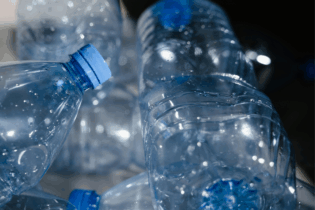A silent climate revolution is underway in the maze of pipelines in the mining industry experiencing an acceleration in environmental, social and governance (ESG) adoption.
Investors, regulators and customers have been harnessing their collective influence to transform an industry that does not immediately strike as green. This conscious focus on factors that appeared as footnotes in previous decades has allowed mining companies to increasingly become cleaner, socially responsible and sustainable. Mining production is essentially carbon-heavy and one of the focus areas for companies involved has been to transition to lower-carbon alternatives. The recent announcement increasing the threshold for self-generation of power from the current 1MW to 100MW will contribute to the industry’s efforts of reducing emissions. In fact, last year, Anglo American announced it was working with partners to trial hydrogen-powered trucks at its facilities. A fleet of large dump trucks traveling back and forth carrying heavy loads of minerals and ore contributes significantly to greenhouse gas (GHG) emissions in surface mining operations. In addition to carbon dioxide (CO2), they also produce methane and nitrous oxide from the tailpipe. While the emissions of these gases are small in comparison to CO2, they have a higher global warming potential (GWP) than CO2. Tumi Tsehlo, CEO, Dynamic Fluid Control, a global valve manufacturer says, “The introduction of a carbon tax has pushed South African miners to increasingly consider all possible ways of limiting carbon exposure.” “One of their core areas which is of great interest to the valves and pumps industry is ore and tailing transportations. At its most basic, simply mixing the ore with a liquid to make a slurry that can be transported through a pipe can pay green dividends. This comes with a number of handling advantages, requires minimum maintenance, and has a low environmental impact.” Already a number of operations in South Africa use pipelines to move mining material over long distances. “Trucks and automobiles produce over 70% of the total road transport emissions in SA. A truck burning 400 litres of diesel produces a ton of CO2 which would take a typical hardwood tree over 40 years to sequester. While the figures are open to debate, the value of pipeline transportation is not and must be recognised for their contribution to greening,” adds Tsehlo.A pipeline transportation system is only as good as the valves on it which are required to control and manage the flow of the medium. However, valve manufacturers are getting a rap they do not deserve because of cheaper imports and improper installations.
DFC which makes Saunders Diaphragm Valves, SKG Knife Gate Valves, RF Pinch Valves and Vent-O-Mat Air Valves, key to surface operations of copper, iron ore and gold miners believes that the widespread adoption of pipelines for transportation is hindered by opportunistic players who import cheaper substandard valves. Most times these valves do not function as intended because they are installed without studying the piping system design, poorly located to tackle flow rates and in many instances are a wrong fit for the application. Properly sized and installed valves deliver optimum system performance with minimum maintenance. Any deviation from this could cost millions of rands in downtime. “Without valves, actuators and controls, a pipeline would not be as useful,” says Tsehlo. It is never smooth sailing inside the pipeline and valves are constantly exposed to vibrations, turbulence, corrosive and abrasive tailings or concentrate slurry material, energy losses and pressure. A valve at all times must perform and seal without exception. A poor choice of valve poorly installed and not built for local conditions can force the pipeline to explode or implode. DFC which has been in business since 1947 designs its own valves and manufactures most of the critical components that go into a valve at its factory in Benoni. “Valves on transport pipelines play the same role they play inside the heart. Valves must be reliable or they could collapse the system. It is for this reason that we devote efforts to extensive research and development and manufacture in most markets to be closer to local conditions like Australia, Finland and US amongst others,” says Tsehlo in conclusion. “Pipeline transportation can be a powerful force to accelerate towards net zero emissions with valve manufacturers forming a fulcrum to help the mining sector mitigate climate risk load. The trinity of pipelines, valves and pumps can progress environmental protection on site, a critical action point for the mining sector.”







